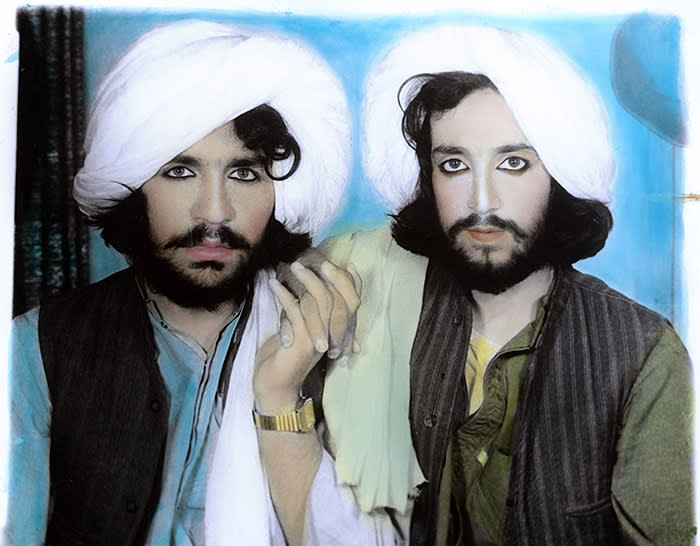
A new exhibition explores masculinity, from the tough to the tender
The Barbican’s Masculinities show offers a journey through the complexity of modern maleness
by Ekow EshunIn 1976, the celebrated photographer Richard Avedon was commissioned by Rolling Stone magazine to create a series of portraits on American power. Avedon spent months crossing the country taking pictures of politicians, business leaders and military top brass.
The resulting set of 69 photos was published in October 1976, just in time for the November presidential elections. Among the photographer’s subjects were President Gerald Ford and his three immediate successors, Jimmy Carter, Ronald Reagan and George HW Bush, statesmen such as Henry Kissinger and the scions of famous dynasties including the Kennedys and the Rockefellers.
Avedon titled the project “The Family”, a reference to the web of personal and occupational connections that tied many members of America’s power elite together. Seen today, the most striking aspect of the series is the uniformity of its subjects.
There’s the occasional woman in the mix, such as Katharine Graham, publisher of The Washington Post, but, in the main, the portfolio is made up of portrait after portrait of white, middle-aged men.
The series reflects the reality of its time, but with hindsight it also feels as if Avedon captured a record of the last period of uncontested straight, white, male rule.
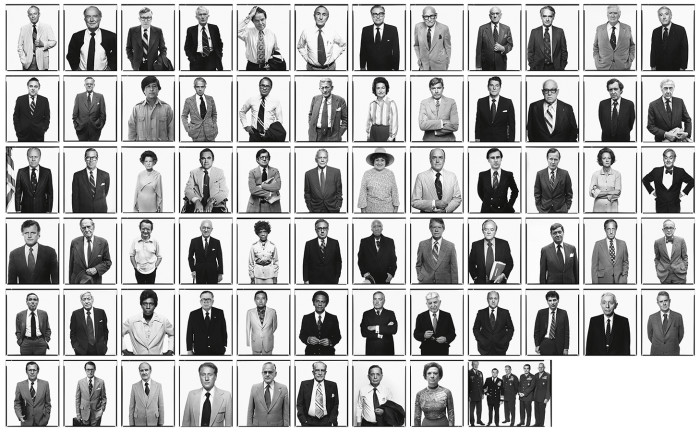
In the America of 1976, women, black people and gay people were increasingly coming to the fore. Washington, DC, had an African-American mayor. The openly gay Harvey Milk was running for elected office in San Francisco.
Time magazine gave its Person of the Year award in 1975 to “American Women” in recognition of the advances feminism had made across “every layer of society”. Despite the self-assurance projected by Avedon’s male subjects, power was no longer in their hands alone.
“The Family” is one of the artworks featured in the Barbican’s new exhibition, Masculinities: Liberation through Photography, which I helped to curate.
With men and their behaviour the subject of consistent controversy, from #MeToo, revenge porn and incel communities to the ascendance of strongman leaders such as Donald Trump, Vladimir Putin and Recep Tayyip Erdoğan, this is a timely moment for such a show. Not least because there’s also growing awareness of the emotional and psychological problems that come with being a man today: in the UK, one in eight men suffer from a mental health condition such as depression or anxiety, and suicide is the biggest killer of men under 35.
Yet until recently, being a man was considered a default condition that required little in the way of examination. So while there are innumerable movies, books and stories with men as the star, there are far fewer works that make maleness itself their subject.
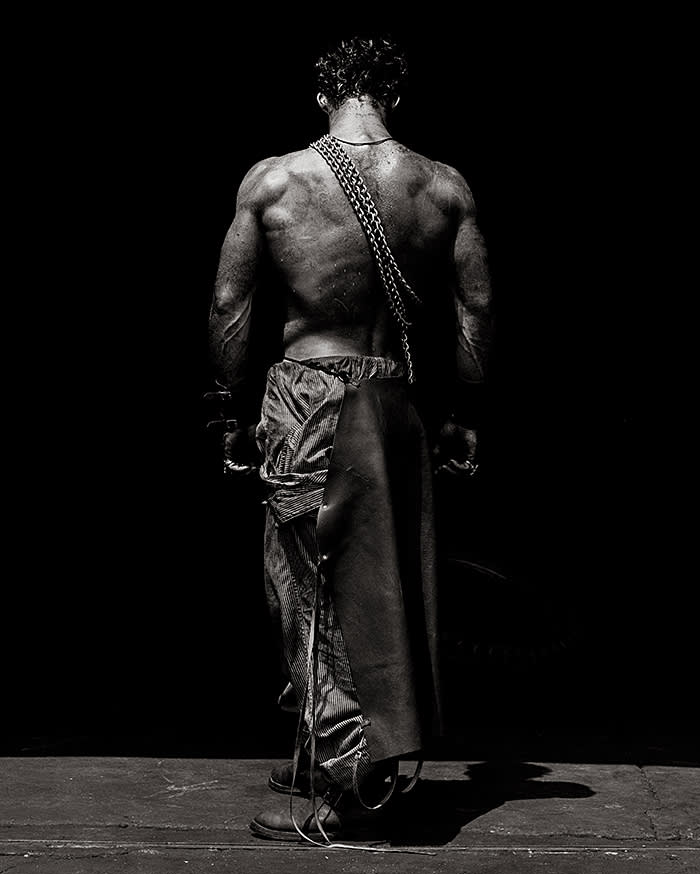
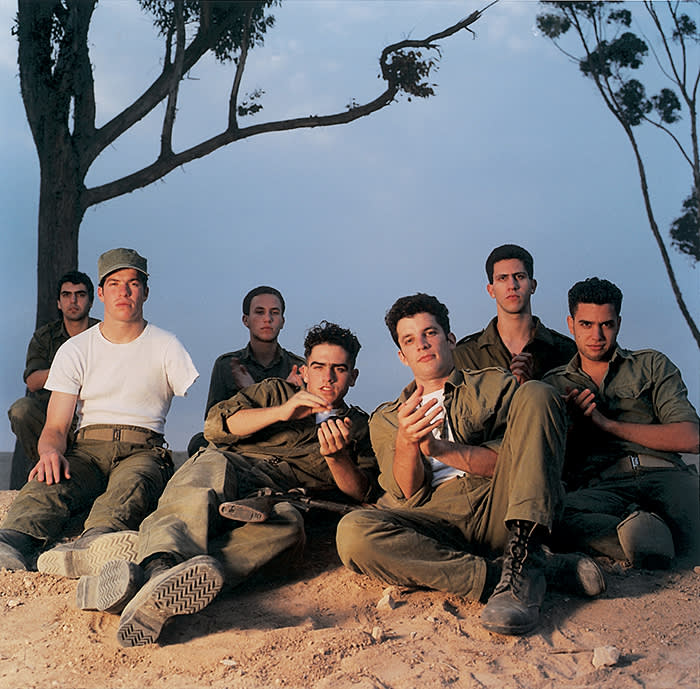
The exhibition brings together representations of masculinity from the 1960s to the present day from more than 50 leading photographers and film-makers, male and female, including Robert Mapplethorpe, Andy Warhol, Catherine Opie, Herb Ritts, Wolfgang Tillmans and Samuel Fosso.
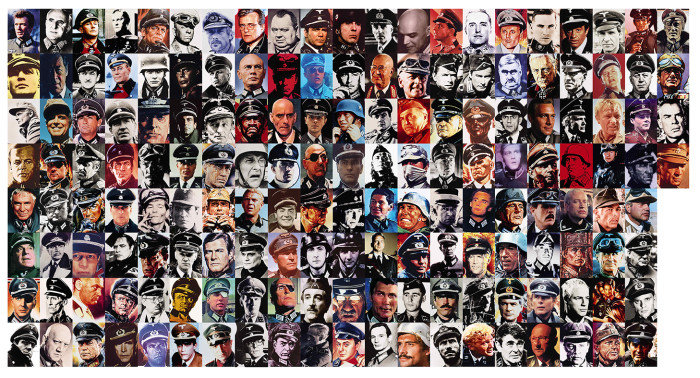
The result is a kaleidoscopic journey through the complexity and contradiction of modern maleness. For example, in a variety of photo projects, the male body is depicted as alternately tough or tender, an object of aggression or ardour — or sometimes all of these at once. Mapplethorpe recasts Arnold Schwarzenegger’s hypermasculine physique as a locus for homoerotic desire.
There are provocative projects, such as Piotr Uklanski’s “The Nazis”, a grid of 164 portraits of famous actors, including Harrison Ford, Ralph Fiennes and Yul Brynner, all dressed, in character, as officers of the Third Reich. There are moments of startling intimacy, like Richard Billingham’s unsparing but poignant pictures of his alcoholic father and Masahisa Fukase’s 20-year documentation of his father’s path from vigorous physicality into frail old age.
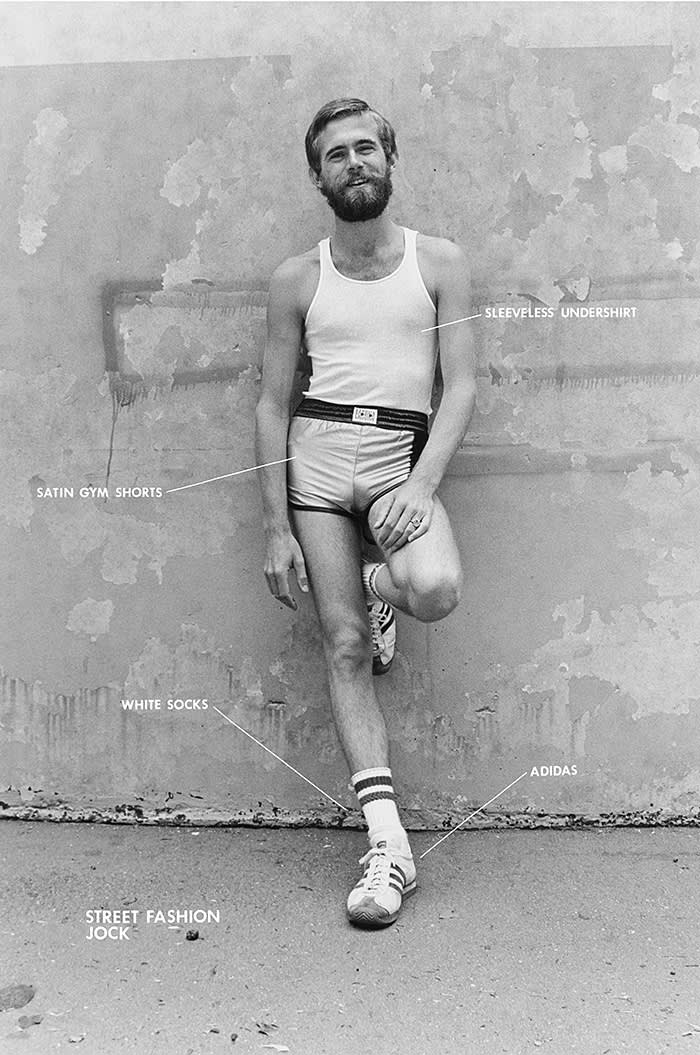
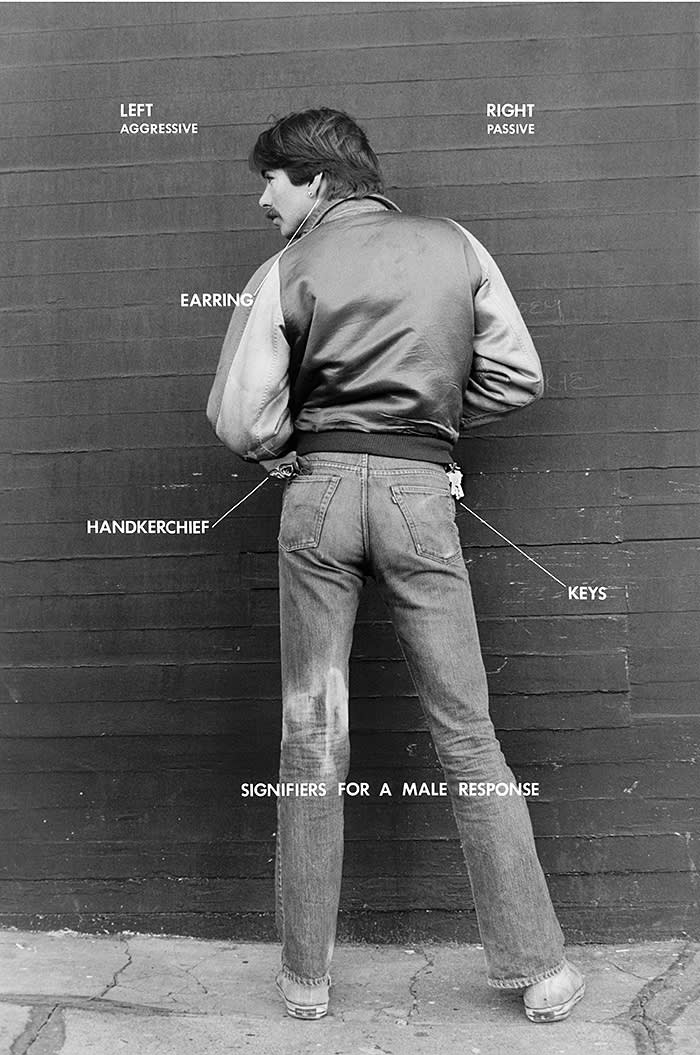
The breadth of perspectives on display in Masculinities is a powerful illustration of the exhibition’s guiding premise. Our attitudes to maleness, the show suggests, are shaped by culture, custom and social factors such as race, class and income. Men are created out of circumstances, not cast from a single mould. There is no set of authentic attributes or biologically determined characteristics that define what it really means to be a man.
Take, for instance, the portraits of Taliban fighters that were discovered in Kandahar, Afghanistan, by the photographer Thomas Dworzak. Stripped of context, the retouched photos of the men, their cheeks rouged and eyes lined with kohl, staring dreamily into the camera like silent-movie stars, look highly effeminate. But the men of Kandahar have a long tradition of decorative dressing.
When they wear henna-painted fingernails or high-heeled sandals, they do so without raising questions about the nature of their masculinity. That tradition persisted even under the austere rule of the Taliban, albeit clandestinely. Dworzak, on assignment during the US invasion of Afghanistan in 2002, found the pictures hanging in the hidden back rooms of different Kandahar photographic studios after the regime’s men had fled the city.
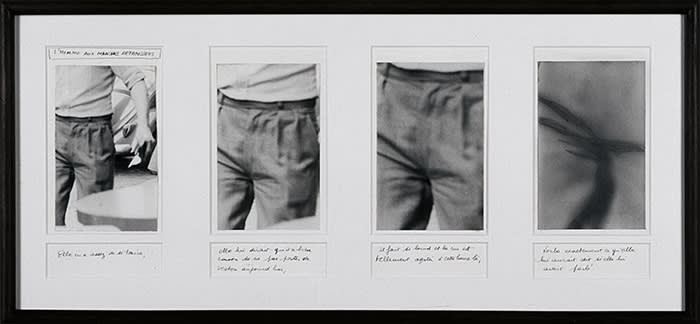
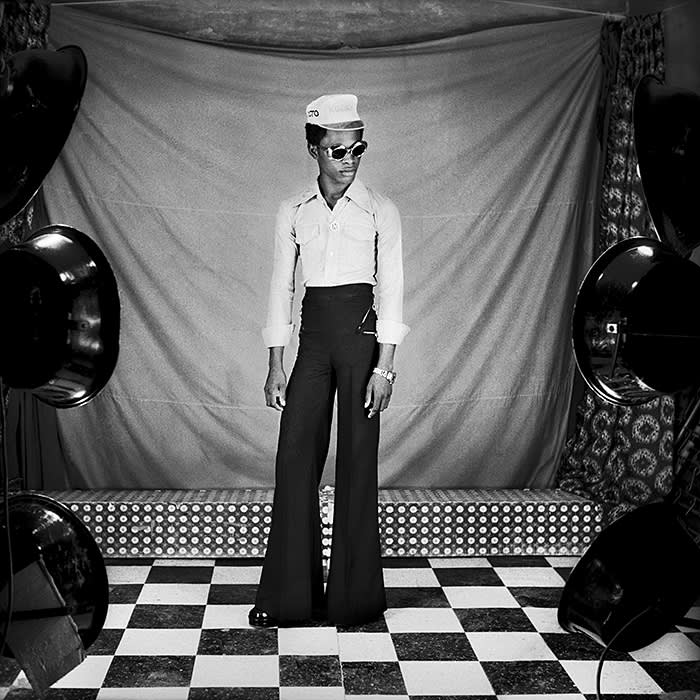
Masculinities, to underscore its point that maleness is better understood in the plural than the singular, offers some examples of what it looks like when men cluster around a fixed notion of identity, invariably with dispiriting outcomes. To create his series “The American Fraternity”, photographer Andrew Moisey spent seven years documenting the claustrophobically chauvinistic culture of an unnamed frat house at the University of California.
His images reveal a world of binge drinking, violence, homophobia and misogyny. In one picture, a naked stripper lies face down on a table while the men around her laugh and point, one of them pressing his leering face between her spread-apart legs.
In Moisey’s pictures, and in other works such as “Gentlemen”, Karen Knorr’s photos of the stultifying milieu of all-male private members’ clubs in London, there’s a vivid sense of men acting out an idea of masculinity, as if only by engaging in the same ritualised forms of conduct can the subjects in the photos securely assert themselves as men. Masculinity, as the influential gender theorist Judith Butler has contended, is a “performance” that becomes accepted as reality through the same shared actions and behaviours.
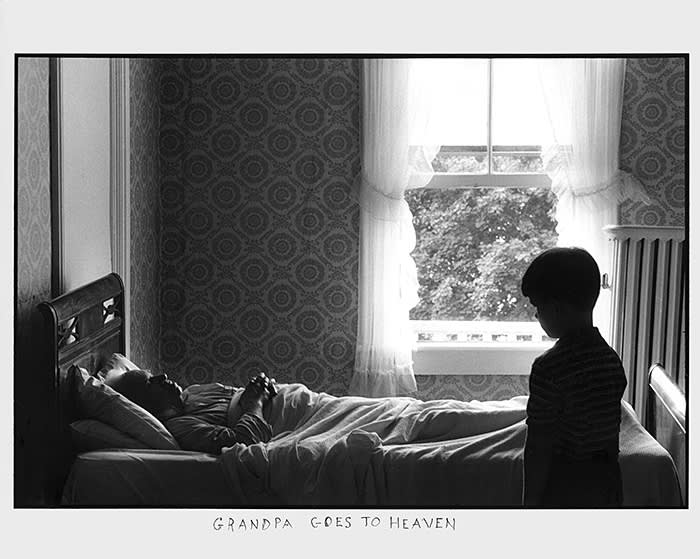
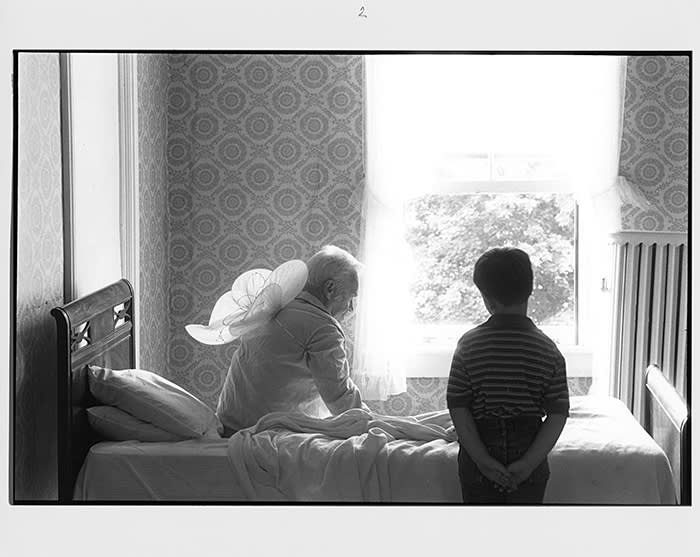
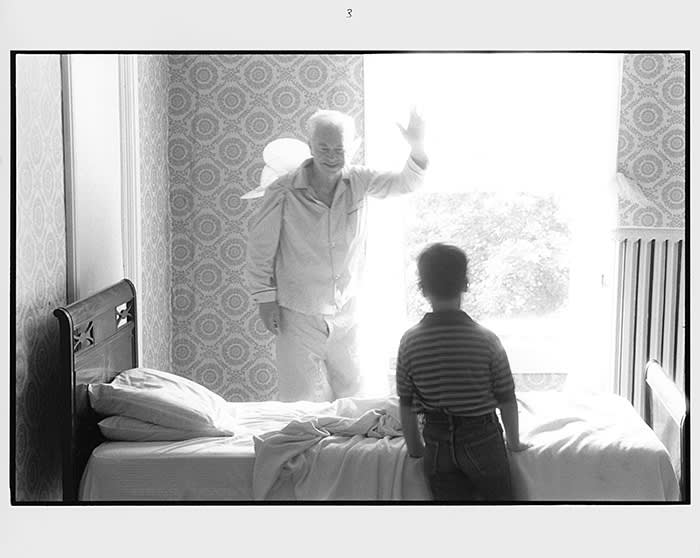
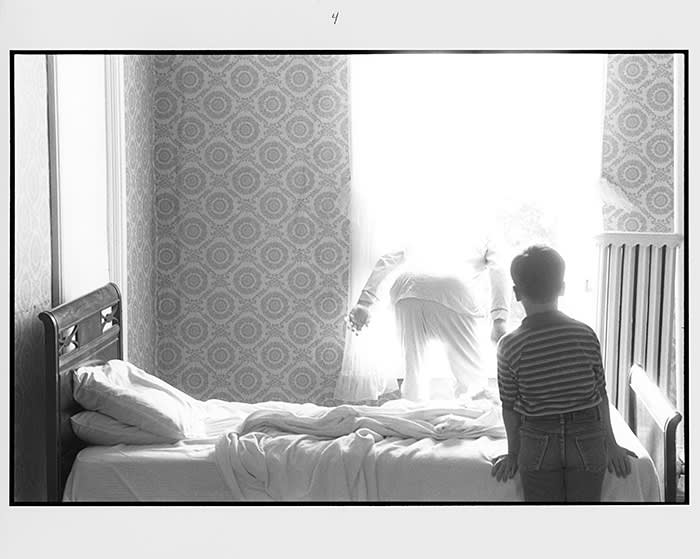
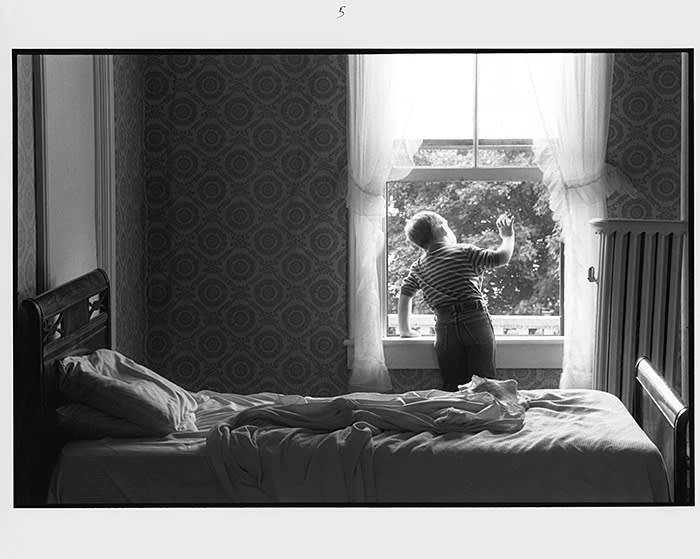
But sometimes, deliciously, men choose to rip up the script. In 1975, aged 13, Samuel Fosso set up his own photography studio in the Central African Republic, having fled the Biafran war in Nigeria.
After closing time, Fosso acquired the habit of taking his own photograph. Picturing himself in flares and platform boots was, in part, an act of rebellion against the rule of Jean-Bédel Bokassa, the self-declared Emperor of Central Africa, who had instituted a ban on tight-fitting clothes.
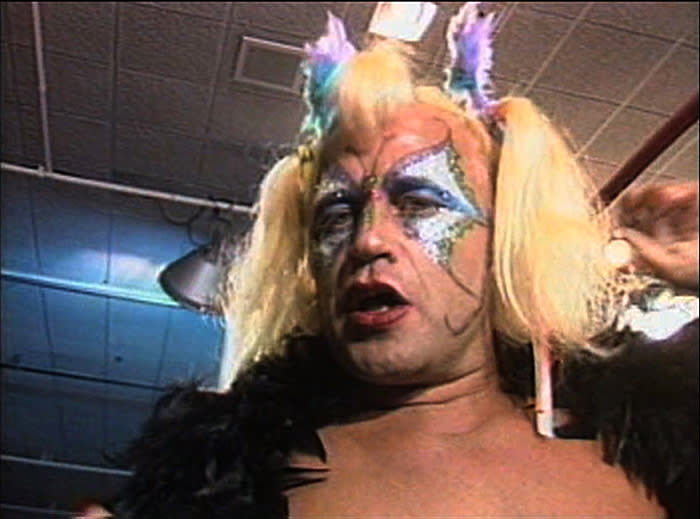
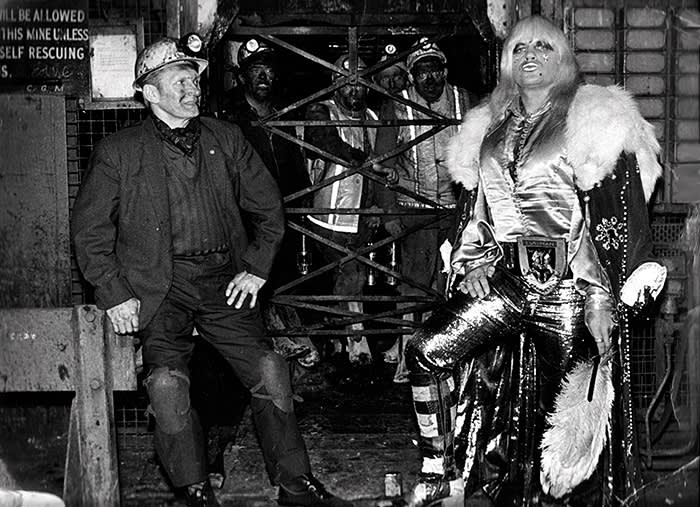
Jeremy Deller’s documentary film So Many Ways to Hurt You follows the life of the wrestler, “Exotic” Adrian Street. Street was born in a Welsh mining town in 1940.
After school, he worked down the pits before quitting to become a professional wrestler. It was the 1970s and, heavily influenced by glam rock, Street adopted a flamboyantly camp persona complete with peroxide hair and lurid make-up.
His signature move in the ring was to kiss opponents as they tried to pin him down. Deller’s film features a picture of the wrestler returning to his home town in 1973. Street is posing for the camera at the pithead of the Brynmawr colliery. He wears platform boots, a fur-trimmed coat and has a pair of full, pouting lips.
The man beside him, casting a wary eye at the wrestler, is his father, who has worked down the mines all his life. The picture of father and son is a perfect encapsulation of conflicting ideas of manhood.
On the one hand maleness is an authentic expression of strength, fortitude and whatever other characteristics might be ascribed to the identity of a working man. On the other, it is artifice; an act with no more substance than ditching a miner’s helmet for make-up and shoulder-length hair.
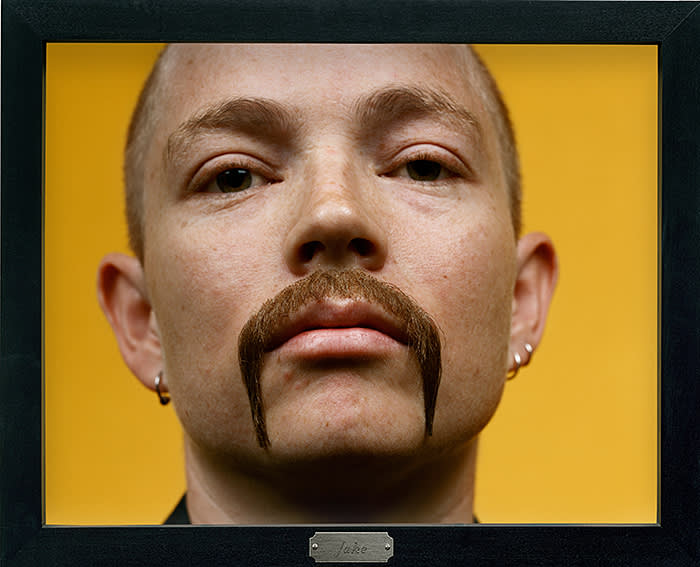
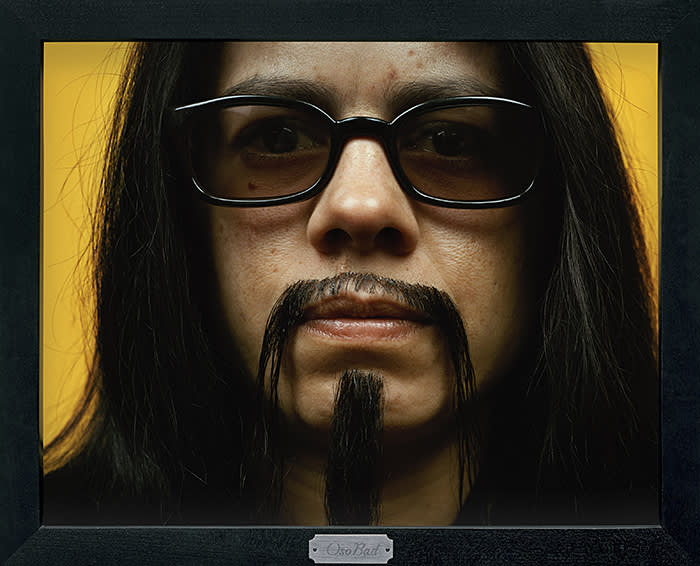
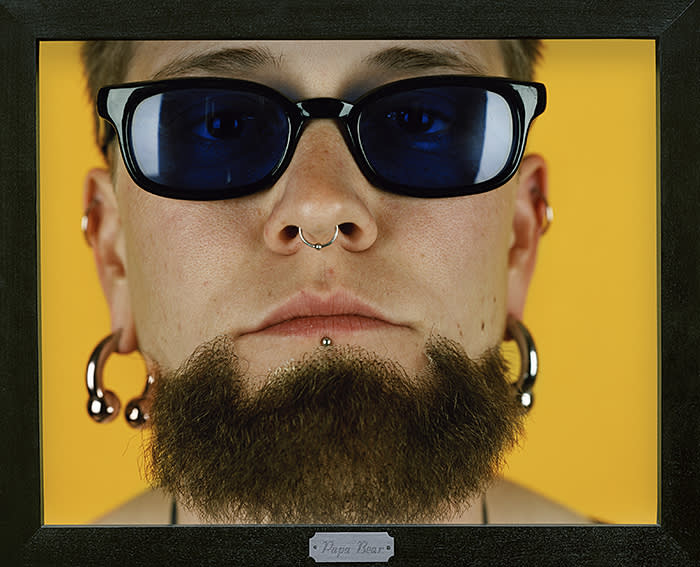
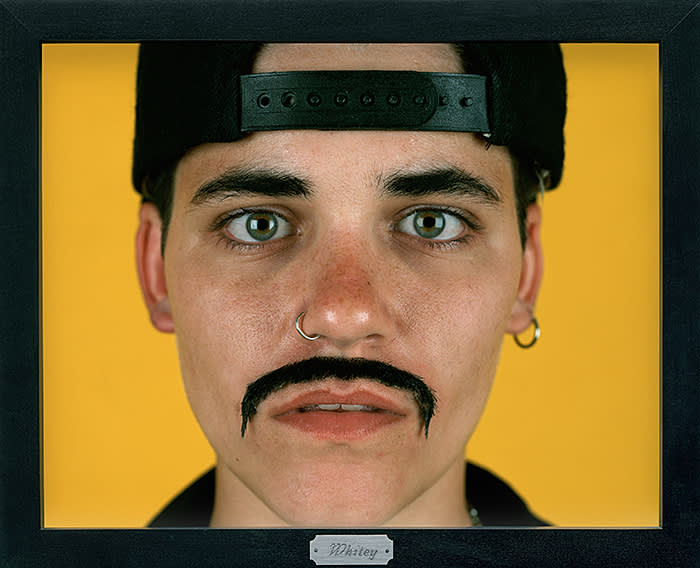
With works such as Deller’s in mind, Jonathan D Katz, an art historian and adviser to the exhibition, argues that mainstream ideas of masculinity have become increasingly “queered”, with stereotyped ideals of the hard, stoic, “real” man giving way to less prescriptive, more fluid expressions of identity — think, perhaps, Harry Styles co-hosting the Met Gala in a ruffle-bowed Gucci blouse and a single pearl earring. We are, says Katz, “finally transcending the world of stabilised binary polarities, whether they be male/female, straight/gay, majority/minority or conformist/nonconformist”.
A world beyond gender? In time, maybe even the idea of an exhibition looking at male identity might itself be consigned to history.
“Masculinities: Liberation through Photography” is at the Barbican from February 20-May 17; barbican.org.uk
Who’s who in Richard Avedon’s ‘The Family’
First row (left to right): Richard Kleindienst, former US attorney-general, Washington, DC, July 29 1976; James Skelly Wright, circuit judge, US Court of Appeals for District of Columbia Circuit, Washington, DC, July 29 1976; Leonard Woodcock, president, United Automobile Workers, New York, April 9 1976; Arnold Miller, president, United Mine Workers, Washington, DC, May 5 1976; Frank Church, US senator (Idaho), Washington, DC, March 1 1976; Mike Mansfield, US senator (Montana), majority leader of the Senate, Washington, DC, March 2 1976; Nelson Rockefeller, US vice-president, New York, June 28 1976; Emanuel Celler, former US congressman (New York), New York, August 12 1976; F Edward Hébert, US congressman (Louisiana), Washington, DC, July 8 1976; Thomas Eagleton, US senator (Missouri), New York, July 14 1976; Thomas ‘Tip’ O’Neill, US congressman (Massachusetts), majority leader of the House of Representatives, Washington, DC, May 6 1976; Peter Rodino, US congressman (New Jersey), New York, July 14 1976
Second row: Joseph Califano, attorney, Washington, DC, June 8 1976; John deButts, chairman, AT&T, New York, May 5 1976; César Chávez, organiser, United Farm Workers, Keene, California, June 27 1976; Charles Shaffer, attorney, New York, July 9 1976; Herbert J Miller Jr, attorney, Washington, DC, August 10 1976; James Angleton, former chief of counter-intelligence, CIA, Arlington, Virginia, July 8 1976; Lady Bird Johnson, former US First Lady, McLean, Virginia, August 24 1976; J Paul Austin, chairman, Coca-Cola, Atlanta, Georgia, August 21 1976; Ronald Reagan, former governor of California, Orlando, Florida, March 4 1976; George Meany, president, AFL-CIO, Washington, DC, March 3 1976; Edmund Muskie, US senator (Maine), Washington, DC, March 1 1976; Eugene McCarthy, former US senator (Minnesota), Washington, DC, March 3 1976
Third row: Gerald Ford, US president, Washington, DC, March 18 1976; William Simon, Treasury secretary, Washington, DC, May 4 1976; Rose Fitzgerald Kennedy, Hyannisport, Massachusetts, September 2 1976; George Wallace, governor of Alabama, Ocala, Florida, March 5 1976; AM Rosenthal, managing editor, The New York Times, New York, August 20 1976; Clark Clifford, attorney, Washington, DC, August 10 1976; Bella Abzug, US congresswoman (New York), New York, June 19 1976; Melvin Laird, former defence secretary, Washington, DC, June 8 1976; Jerry Brown, governor of California, Sacramento, California, March 20 1976; George HW Bush, director, CIA, Langley, Virginia, March 2 1976; Katharine Graham, chairman, The Washington Post Company, Washington, DC, March 11 1976; Daniel Patrick Moynihan, former US representative to the United Nations, New York, July 12 1976
Fourth row: Edward Kennedy, US senator (Massachusetts), Washington, DC, July 29 1976; Roger Baldwin, founder, American Civil Liberties Union, New York, June 2 1976; IF Stone, journalist, Washington, DC, July 8 1976; Jules Stein, founder, Music Corporation of America, New York, May 28 1976; Shirley Chisholm, US congresswoman (New York), New York, July 12 1976; Henry Kissinger, US secretary of state, Washington, DC, June 2 1976; A Philip Randolph, founder, Brotherhood of Sleeping Car Porters, New York, April 8 1976; Jimmy Carter, former governor of Georgia, Miami, Florida, March 5 1976; Hubert Humphrey, US senator (Minnesota), Washington, DC, March 12 1976; Edward Wilson, chairman, J Walter Thompson, New York, April 15 1976; Pete Rozelle, commissioner, National Football League, New York, July 7 1976; Daniel Boorstin, librarian of US Congress, Washington, DC, July 29 1976
Fifth row: Felix Rohatyn, chairman, Municipal Assistance Corporation, New York, April 15 1976; William Paley, chairman, CBS Inc, New York, April 13 1976; Barbara Jordan, US congresswoman (Texas), New York, July 14 1976; Frank Fitzsimmons, president, International Brotherhood of Teamsters, Washington, DC, May 6 1976; Daniel Inouye, US senator (Hawaii), New York, July 14 1976; Andrew Young, US congressman (Georgia), New York, July 15 1976; Walter Annenberg, publisher, Radnor, Pennsylvania, May 10 1976; Arthur Burns, chairman of the US Federal Reserve, Washington, DC, May 4 1976; Benjamin Bailar, US postmaster general, Washington, DC, July 8 1976; Ralph Nader, consumer advocate, Washington, DC, June 8 1976; Admiral Hyman Rickover, deputy commander for nuclear propulsion, Naval Sea Systems Command, Washington, DC, May 6 1976; Cyrus Vance, chairman, board of trustees, The Rockefeller Foundation, New York, August 20 1976
Sixth row: Donald Rumsfeld, defence secretary, Washington, DC, May 7 1976; Elliot Richardson, commerce secretary, Washington, DC, May 4 1976; George McGovern, US senator (South Dakota), Washington, DC, March 1 1976; W Mark Felt, former associate director, FBI, Fairfax, Virginia, July 8 1976; Earl Butz, agriculture secretary, Washington, DC, July 29 1976; Thomas Gleason, president, International Longshoreman’s Association, New York, June 29 1976; Carl Albert, US congressman (Oklahoma), speaker of the House of Representatives, Washington, DC, March 12 1976; Rose Mary Woods, secretary to President Richard Nixon, Washington, DC, August 10 1975; and the Joint Chiefs of Staff: General Frederick Weyand, chief of staff, US Army; Admiral James Holloway, chief of naval operations, US Navy; General George Brown, US Air Force, chairman of the Joint Chiefs; General David Jones, chief of staff, US Air Force; General Louis Wilson, commandant of the Marine Corps, Washington, DC, August 24 1976
Follow @FTMag on Twitter to find out about our latest stories first. Listen to Culture Call, the FT’s transatlantic culture podcast, which interviews people shifting culture in London and New York. Subscribe at ft.com/culture-call, Apple Podcasts, Spotify or wherever you listen to podcasts.